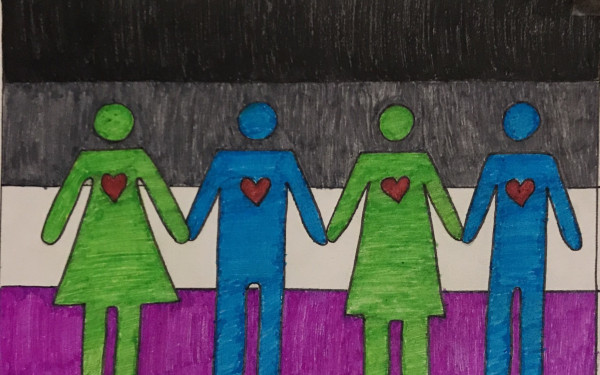We Need Open Conversations About Sexual Health
A Sex Ed(itorial) Column
Your eyes may have glanced over the title of this article and then checked to see who wrote it.
You probably don’t recognize my name, so you might assume I am going to share my STI experiences. You might be wondering which one I have. Herpes? Chlamydia? HPV?
I don’t actually have an STI. In fact, I’ve never had one.
My STI status has no relevance to who I am. Except, I still felt the need to tell you I’ve never contracted one.
That is the fundamental issue with STIs—they carry an enormous stigma. If I walked into class with a cold, people might move a few inches away from me, but they wouldn’t mark me forever as “the woman with the cold.” I wouldn’t hesitate about telling people I had a cold. So why are STIs any different?
Sacramento sex educator and founder of the upcoming website Sex+ Parenting Kenna Cook said it comes from the fact that sex is a taboo topic.
“STIs are seen as a punishment, when in reality they are just a very common, easily spread bacteria or virus like the flu,” she explained. “There is so much shame built into our society about wanting sex, talking about sex, and thinking about sex, that people think it is deserved. We see STIs as a disease of morality.”
Kim Cavill, sex educator at O.school, a sex education website, said that STIs tend to make people feel vulnerable.
“STIs can produce symptoms that people generally wish to avoid, like herpes blisters or genital warts,” she said. “These symptoms, and thus the STIs themselves, become laden with cultural symbolism about shame, promiscuity, cleanliness, virtue, and even divine retribution for ‘sinful’ behaviour.”
Preventing any type of disease or infection is always the goal. Worry or fear of contagious illnesses is not unusual, and not something we should aim to erase.
The goal isn’t to promote ambivalence towards getting sick—the goal is to be able to have normal conversations about prevention and treatment.
If you go on a trip, you learn about avoiding tap water, you remind your friends to close their mouths in the shower, you ask the waiter for no ice cubes. Talking about STI prevention in an open, neutral way like this is the only way forward.
Laura Claver, sex blogger and ex-nude model, said we need to move away from the idea that “sex is bad” and focus on better sex education.
“STIs have to stop being used as scare tactics and punishments. We have to stop making moral judgments on those with STIs. We need to normalize and encourage testing, and encourage being knowledgeable instead of fearful and ignorant,” she said.
Reported rates of STIs have been on the rise since 1997, according to the Canadian Notifiable Disease Surveillance System. The Public Health Agency of Canada reports that the increased rate is partly attributed to “improved lab tests and screening, as well as people not consistently using safer sex methods.”
In 2008, 70 per cent of the over 160,000 cases of “notifiable diseases” reported to the CNDSS were sexually transmitted and bloodborne infections. Chlamydia accounted for 51 per cent of the overall reported diseases.
The Public Health Agency of Canada says minimizing your risk includes: learning about safer sex methods, talking to your partner about protection, and getting tested. These methods of risk reduction are effective, but they are complicated by the fact that STIs carry a stigma.
That stigma inhibits sex education, it makes conversations with new partners awkward, and it makes trips to the doctor’s office intimidating. The ideas that STIs are dirty or immoral make it difficult to have open, honest conversations.
Even the World Health Organization says that “lack of public awareness, lack of training of health workers, and stigma around sexually transmitted infections remain barriers to greater and more effective use of [preventive] interventions.” If we are shamed from talking about STIs, how will we prevent the spread of them?
Making safe sex conversations and contraceptives “sexy” is one way to help reduce the stigma. Changing our perception of sex and STIs is the first step towards reducing rates.
Genderfluid sex educator Indigo Wolfe said they want to see more people talking about STIs. “I want to see major news outlets discuss how to protect, but still engage. I want condoms and dental dams to be accepted as sexy things,” they said.
Talking openly about STIs can help reduce the stigma surrounding them, which in turn can help reduce rates of transmission. Normalizing the conversation will change the outcome.
If you’d like to contribute to the column, send us your questions, comments, stories and thoughts to opinions@thelinknewspaper.ca.


_600_832_s.png)

_600_375_90_s_c1.jpg)


